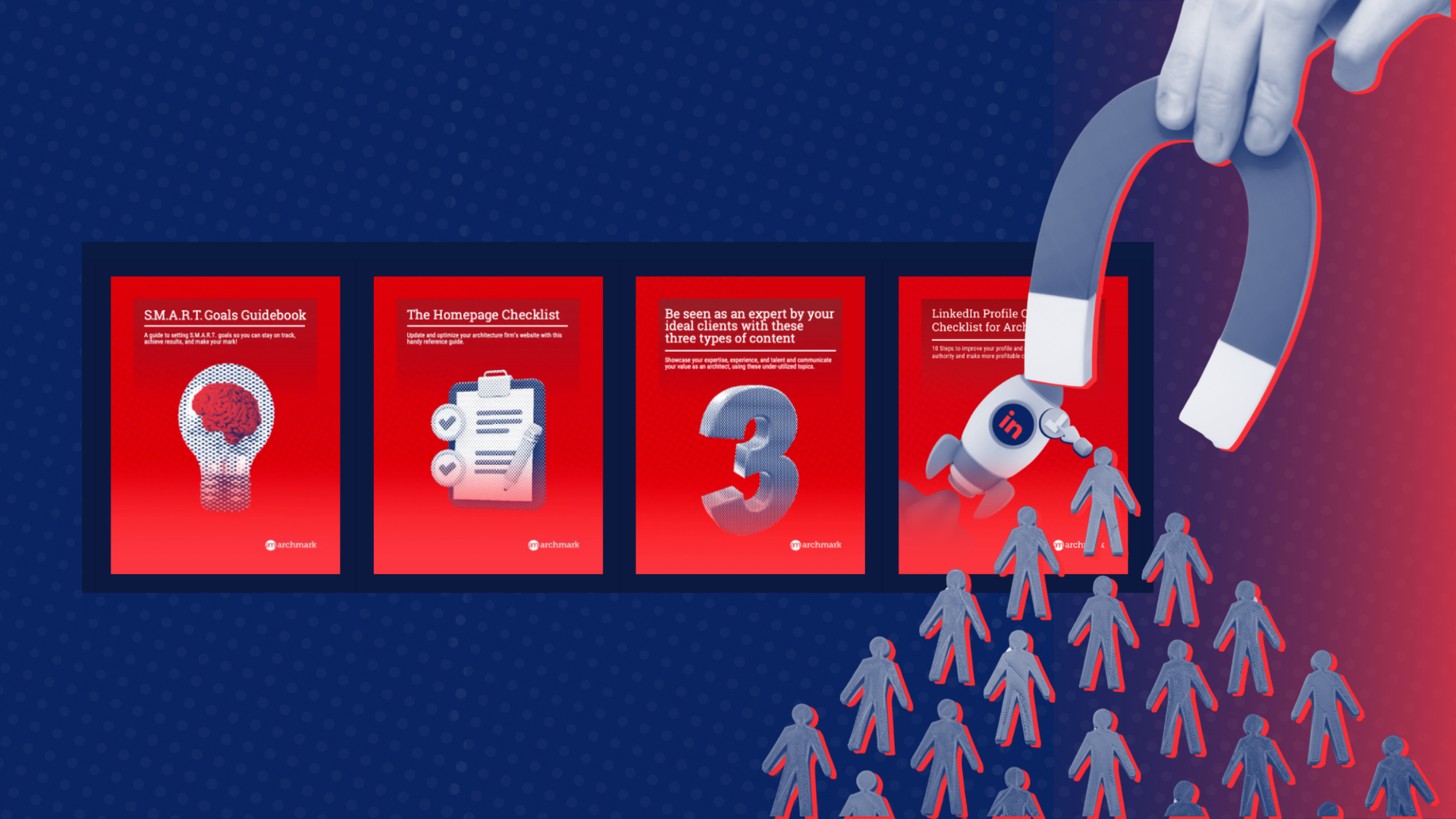Five Tips to Improve SEO for Architecture Firms
Do you want to go back to focusing on the work you love to do?
Do you wish that attracting prospective architectural clients was as easy as sitting back and letting the clients come to you?
There is one way to help make it that easy: Focus on ways to improve your website's rank on Google.
But, how can you do that? The short answer is – Search Engine Optimization (SEO).
For architects working in the commercial sector, the majority (89%) of B2B buyers search for -- and find -- all the information they need to know about potential purchases/hires through the internet. So, if your prospective clients can't find you online, you've lost the opportunity before you even knew it existed.
By focusing your marketing efforts on SEO, you'll be able to get your website ranking higher and establish stronger brand authority with your ideal future clients and, more broadly, in the architectural industry.
In this article, we share five actions you can take to help improve the SEO for your architecture firm, which in turn will help improve and maximize the quality of leads your website and social media generate. You can learn about SEO strategy for architects here.
1. Add a Blog to Your Website
One of the best methods of SEO to get your architecture firm ranking high on the search engines is to add a blog to your current website.
A blog not only provides prospective clients with valuable and insightful information, which shows them that you're a firm of talented professionals, it will also help your website rank higher in search results. This is thanks to your unique, high-quality content that includes relevant keywords and answers the questions those prospects are searching.
Think of it this way: Every article and piece of fresh content you add to your website will create a landing point full of useful information your potential clients will love. And when you use appropriate keywords and backlinks in your blog posts and articles, Google will love you too and you will see your website move up the ranks in search results in no time at all.

Your blog articles also help you to build brand authority online. When you start to blog regularly, every week or every month, you’ll be in a better position to pull in up to 67% more leads per month than architecture firms that don’t blog.
When a prospective client faces a challenge or problem, they head to Google to find the answer. If you have a blog article answering those questions, these prospects are more likely to click on your article link in search results and read your content. This will also help them to view you as the go-to source for their architectural needs and queries.
Long-form online content (blog posts or articles over 5,000 words long) is an especially effective choice for showcasing your extensive industry knowledge and increasing trust in your firm.
Plus, if you can keep them coming back to your website on a regular basis, you'll be the first name that comes to mind when they look to hire an architect for their next project.
2. Refine Your Keyword Research Strategy
Many architecture firms are making a huge mistake with the keywords they choose.
Some firms simply do a quick Google search on a subject related to their niche, then use one of the words that show up in the search bar as their keyword. The reality is, that approach isn’t going to get you anywhere in your quest to rank higher on the search engines.
Others invest in a keyword research tool, and that is a good start. However, when using a keyword research tool, it’s tempting to use the highest search volume keyword, which won’t give you the results you want.
So why won’t using the most popular search term as your keyword help you? Chances are that the larger firms in your industry are already paying a lot of money to become the top search result for that target keyword or keyword phrase. And, instead of forking out a lot of money to just try to compete for it, you and your team can be smarter and take a bit more refined approach to your keyword research.
Here's how: Use your keyword research tool to find keywords with a balance of reasonable search volume and low keyword density. (do we need to describe these terms/) And, look to incorporate long-tail keywords (short phrases).
A reasonably healthy search volume will ensure that you're using a keyword people are actually searching for, while the low keyword density indicates that the keyword you’ve chosen is one you will actually be able to rank for, without having to buy your way to the top. Choosing a long-tail keyword for your next blog is a great choice. These typically have better user intent and should convert better than more generic, individual keywords or phrases.
This approach will help you build more momentum for your website and your blog posts, getting more traffic to your firm’s website and generating more high-quality leads.
3. Prioritize Mobile Friendliness
It probably doesn't come as a surprise that more people now use their smartphones to browse the internet than any other device. Phones are just easier and more convenient to use when it comes to surfing the web.
In fact, statistics show that almost 75% of the world’s population will use only their smartphones for the internet by the year 2025. In other words: Smartphones aren't going away, which means you must prioritize mobile friendliness when it comes to your website.
Take a look for yourself and think hard about the way your architecture firm's website looks and works on a smaller, hand-held screen.
- Is all of your text readable?
- Can your prospects navigate your site from the palm of their hand?
- Are your buttons clickable?
- Is everything in proportion?
- Are images too small or too large?
- Does your site load quickly or does it slowly appear one piece at a time?

You've probably heard people talk about websites being "mobile-friendly" or “mobile-responsive.” This means that your website’s content and design fit perfectly on a phone or tablet screen. It improves the user experience you provide for any prospect or client accessing your website with their phone or other mobile device.
Mobile-friendliness can be the life or death of your site. If your architecture firm website isn’t easy to use from their phones, visitors will quickly give up and
A lot goes into making sure that your website is mobile-friendly and easy to use for mobile visitors.
Mobile users are also far less patient than other online users. If a website takes too long to load, they’re going to click away without even a second thought. In fact, 53% of mobile website visits that take longer than three seconds to load are abandoned immediately. You can check your own website’s loading speed – and see where to make improvements – using one of the many free website speed tools out there, including Google Page Speed Insights and Pingdom.
4. Pay Attention to Your Meta Information
Have you ever wondered how Google's algorithm determines what your architecture firm's website is actually about? There are several factors it uses, but one of the most influential elements is your site's meta information.
These “behind the scenes” tidbits of information help Google's spiders understand your pages as they crawl your site and collect data.
To help them, take the time to add clear and concise page headings (with your primary keyword in it) to your website’s content.
Also add vital keywords to meta title tags and meta descriptions for each page of your website. These tags and descriptions are key to ranking higher on the search engines, and these are the words and phrases displayed on Google's search results when you do get found, so make sure it helps the person searching know what they will find when they click that link.
You'll also want to follow best practices when it comes to:
- Internal links
- Inbound links
- Outbound links
- Broken links
- Image sizes
- On-page SEO
- Off-page SEO
- Duplicate content
Google automatically takes in all of the above when assessing your website.











